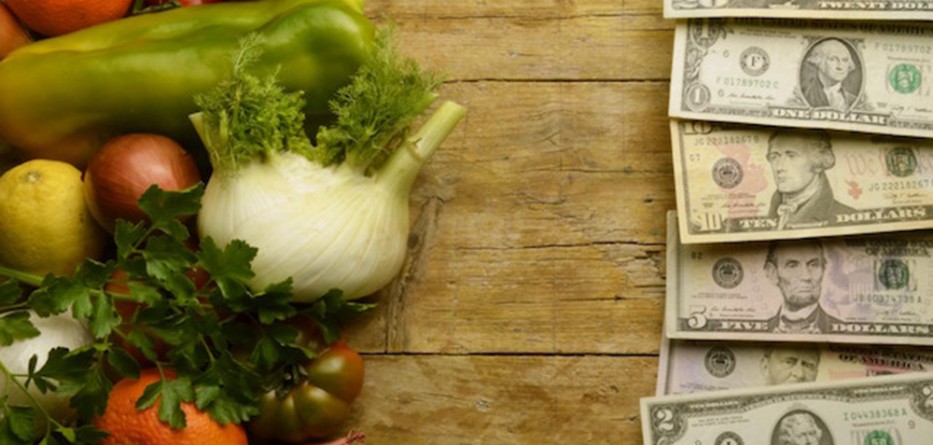“In a startling development, almost unheard of outside a recession, food prices have fallen for nine straight months in the U.S. It’s the longest streak of food deflation since 1960,” reports Bloomberg.
Food prices have never been lower, but food prices are not the same as food costs.
These low prices — not just today, but for the past few decades — obfuscate the true cost of food in terms of the environmental and health impacts they make on our society over time. Negative externalities like fossil fuel consumption, air and water pollution, soil degradation, and poor labor practices are all food costs that aren’t reflected in the price tag.
Without a way to bring the impact of these abstractly large negative externalities down to the human scale, it’s a struggle to viscerally connect the actions of an everyday grocery shopper to these big systems issues.
Take a box of corn cereal for instance: The corn was likely grown in a monoculture sprayed with pesticides that can seep into groundwater and have harmful implications for farmworkers. Using petroleum-based fertilizers to increase yield just bolsters our appetite for fossil fuels. The price of that corn is even cheaper when you consider the heavy government subsidies to promote corn production.
The prices are low because this way of farming results in significant yields. But at what broader cost to the ecosystem and society does this maniacal focus on yield create? What’s the aggregate cost of global warming caused by fossil fuel-based transport and production methods? What’s the aggregate cost of water purification needed to remediate the effects of pesticide ridden runoff? What’s the aggregate cost on healthcare from making junk food insanely cheaper than real food?
How might we better represent the impact of buying a particular food product on the food system?
What if we could represent this on the label so everyday consumers could easily understand the cost of their food beyond what the cash they shell out at the checkout? Might it look like this …

Or like this…

We humans are hard-wired to overemphasize short term effects over long term ones. When we smoke, we don’t think about the lung cancer, we think about the relaxation. When we sit on the couch, we think about the tv show, not the weight gain.
Food is no different. We touch food so frequently that it’s sometimes hard to stop and think about these hard issues in each purchase. Our brains would shut down if we had to think about the full impact of the supply chain on a box of cereal each week at the supermarket.
While people are becoming more mindful about the bigger effects of the food they buy, there’s a lot of room to improve on how we boil down the true systems impact of a food to the individual product.
In 1990, the mandated Nutrition Facts labeling, changing the game forever for how we think about buying food. Food and health felt more connected as a result of the nutrition facts label. Looking toward the future, as public health and the environment are increasingly being linked to our food choices, isn’t it time we start to rethink how to represent food’s real impact on our world on the label and the price tag?
Source: foodtechconnect.com









